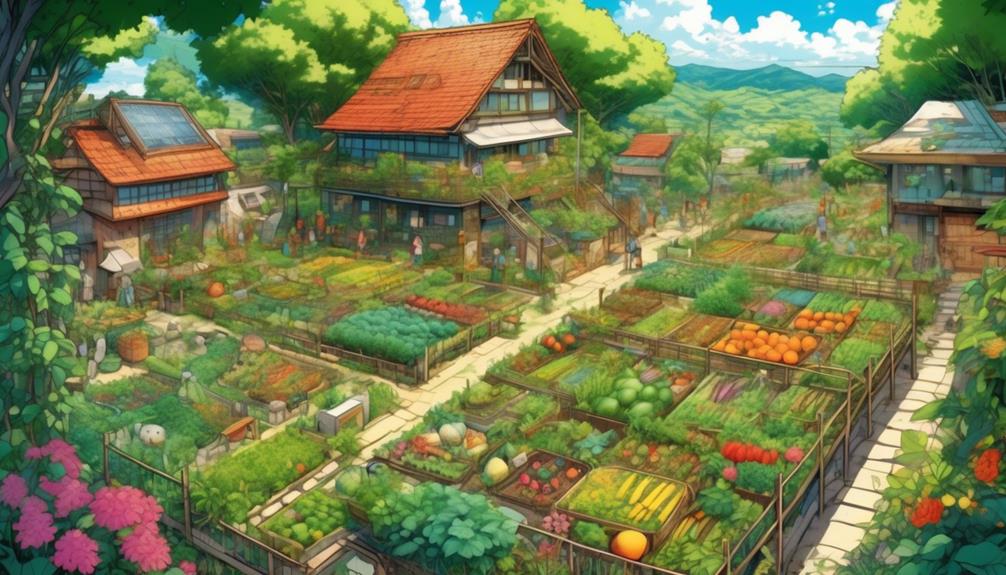Permaculture, a comprehensive framework that integrates ecological principles and design strategies, has emerged as a powerful solution to the challenges faced by modern agriculture and design.
With its roots in the early 20th century, permaculture has been shaped by visionary thinkers and practitioners who have refined its concepts and principles.
By observing and replicating natural patterns, permaculture offers a holistic approach to land use, agriculture, and design, aiming to minimize waste, labor, and energy input while maximizing benefits through synergy.
This article will explore the historical development of permaculture, its foundational ethics and theories, as well as its impact on local communities and sustainable human habitats.
Stay tuned to discover how permaculture is revolutionizing sustainable agriculture and design, presenting a compelling vision for a more resilient and sustainable future.
Key Takeaways
- Permaculture is a design system that aims to create sustainable human habitats by replicating natural patterns and emphasizing patterns, relationships, and synergy.
- The ethics of permaculture include care of the Earth, care of people, and setting limits to population and consumption.
- Permaculture design principles focus on minimizing waste, labor, and energy input while maximizing benefits through synergy, and include observing and interacting with nature, catching and storing energy, and obtaining a yield.
- Permaculture has a strong emphasis on community and generational knowledge, and advocates for self-reliance rather than relying on power structures or governments.
Background and History
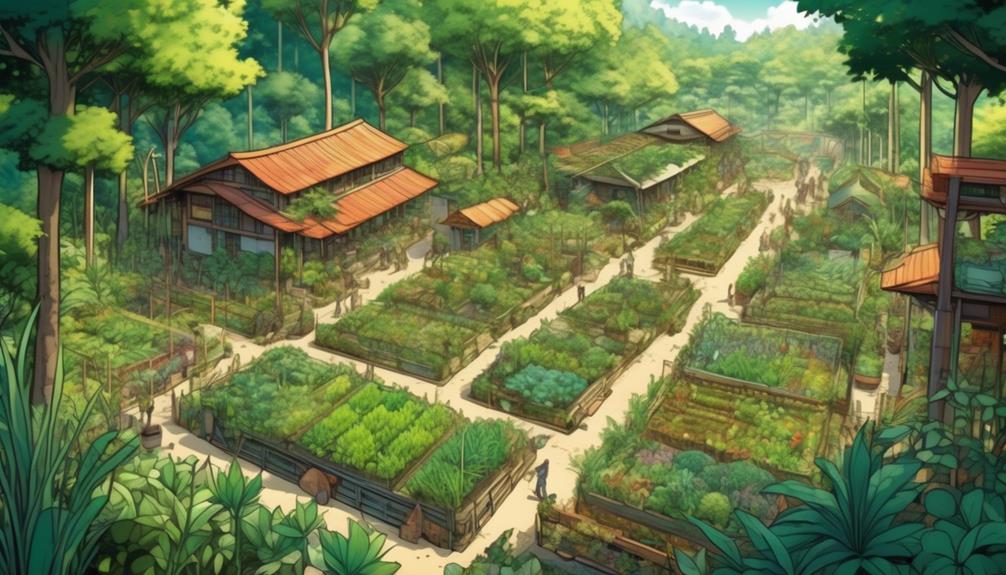
The background and history of permaculture can be traced back to the early 20th century when pioneers such as Franklin Hiram King, Joseph Russell Smith, and George Washington Carver laid the foundations for sustainable agriculture and design.
Franklin Hiram King’s impact was significant, as he introduced the term ‘permanent agriculture’ in 1911, emphasizing the need for sustainable practices.
Joseph Russell Smith continued King’s legacy by writing ‘Tree Crops: A Permanent Agriculture’ in 1929, further promoting the concept of long-term, regenerative farming.
George Washington Carver advocated for innovative practices that prioritized the restoration of soil fertility and the cultivation of diverse crops to promote holistic and regenerative ecosystems
These early pioneers recognized the importance of caring for the Earth and people while setting limits to population and consumption. Their holistic, systems-thinking approach influenced subsequent developments in permaculture, leading to the establishment of ethical principles and the replication of natural patterns in ecosystem design.
The legacies of Franklin Hiram King, Joseph Russell Smith and George Washington Carver continue to inspire and shape the permaculture movement today.
Foundational Ethics and Theory

Rooted in a holistic and regenerative approach, permaculture’s foundational ethics and theory embrace the interconnectedness of nature and humanity, guiding sustainable agricultural and design practices.
Permaculture ethics, which consist of care of the Earth, care of people, and setting limits to population and consumption, form the moral compass for practitioners.
One notable aspect of permaculture ethics is Holmgren’s restatement of the third ethic as ‘Set limits to consumption and reproduction, and redistribute surplus.’ This reframing emphasizes the importance of living within ecological boundaries and sharing resources equitably.
Permaculture theory emphasizes the recognition and replication of patterns, relationships, and synergy found in natural ecosystems. By applying these principles, permaculture design aims to create regenerative systems that minimize waste, labor, and energy input while maximizing benefits.
Through embracing permaculture ethics and theory, practitioners can create harmonious and sustainable communities where nature and people thrive together.
Impact

With a focus on creating harmonious and sustainable communities, permaculture’s impact extends beyond theory and ethics, shaping the way we approach agriculture and design. Permaculture’s global impact is evident in the growing number of practitioners and projects worldwide.
By implementing permaculture principles, communities are able to restore degraded land, increase food security, and promote biodiversity. However, challenges exist in implementing permaculture principles.
These challenges include limited access to resources and knowledge, resistance to change from conventional agricultural practices, and the need for supportive policies and infrastructure.
Despite these challenges, permaculture offers a regenerative and holistic approach to agriculture and design, addressing the pressing issues of climate change, soil degradation, and food insecurity. Through its emphasis on sustainability and community engagement, permaculture provides a pathway towards creating resilient and thriving ecosystems for future generations.
Permaculture History
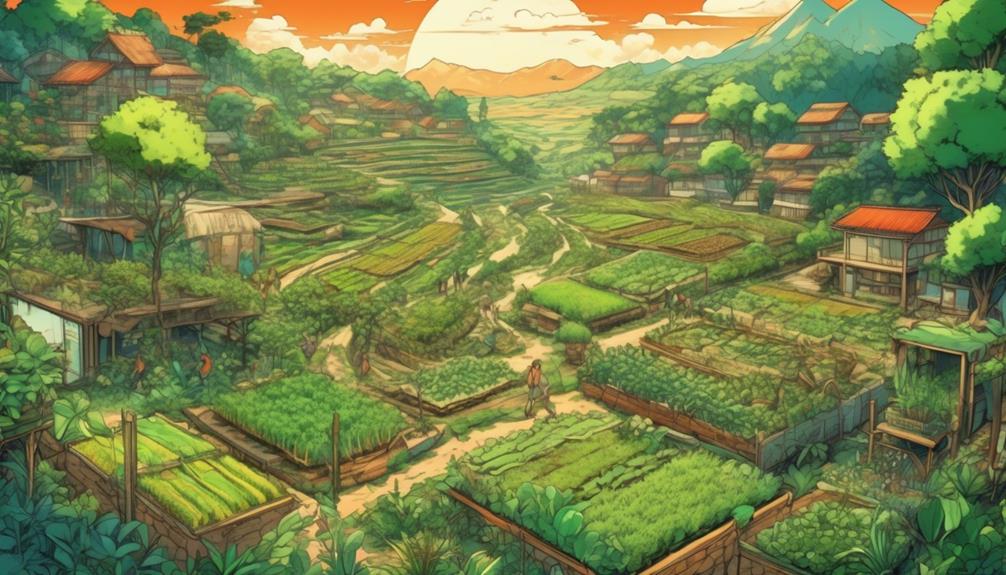
Permaculture’s evolutionary journey can be traced back to the pioneering ideas of Franklin Hiram King and Joseph Russell Smith in the early 20th century. These visionaries laid the foundations for what would become a global movement.
Here are three key developments in the history of permaculture:
- Permaculture education: Permaculture gained momentum in 1978 with the publication of ‘Permaculture One‘ by Bill Mollison and David Holmgren. Mollison traveled extensively, teaching the Permaculture Design Course to audiences around the world, spreading the principles and practices of permaculture.
- Permaculture in urban areas: As the concept of permaculture expanded from agriculture to sustainable human habitats, it found particular relevance in urban areas. Permaculture design principles began being applied to transform urban spaces into thriving, regenerative ecosystems.
- ‘Permaculture: A Designers Manual‘: In 1988, Bill Mollison published this comprehensive manual, which became a seminal work in permaculture education. It provided a holistic framework for designing sustainable systems, including practical guidance on topics like energy efficiency, water management, and food production.
Permaculture’s rich history highlights its transformative potential in both rural and urban contexts, making it a valuable approach for creating resilient and regenerative communities.
Permaculture Design Principles
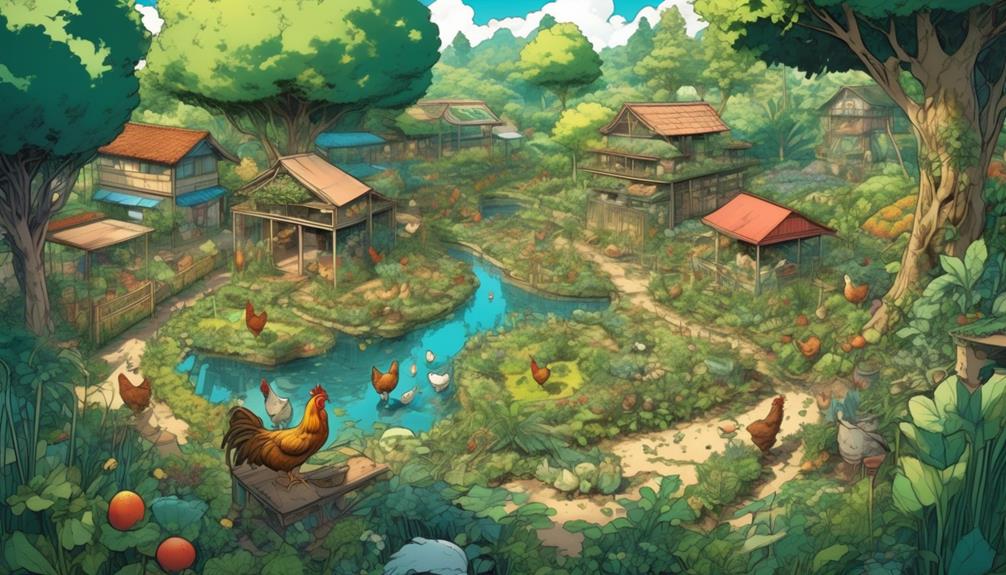
Permaculture design principles embody a holistic, regenerative approach that integrates ecological systems thinking to create sustainable and resilient environments. These principles are rooted in the idea of maximizing benefits through synergy.
The first principle is to observe and interact with nature, recognizing that it holds valuable knowledge and wisdom. By understanding the patterns and relationships in natural systems, we can design more effectively.
The second principle is to catch and store energy, recognizing that energy is a valuable resource that can be harnessed and used efficiently. This includes capturing and utilizing renewable energy sources such as sunlight and rainwater.
The third principle is to obtain a yield, recognizing that our efforts should result in tangible outputs and benefits. By designing systems that produce food, energy, and other resources, we can create abundance while minimizing waste and input.
These principles guide us in creating regenerative and sustainable designs that work in harmony with nature.
Franklin Hiram King’s Contributions
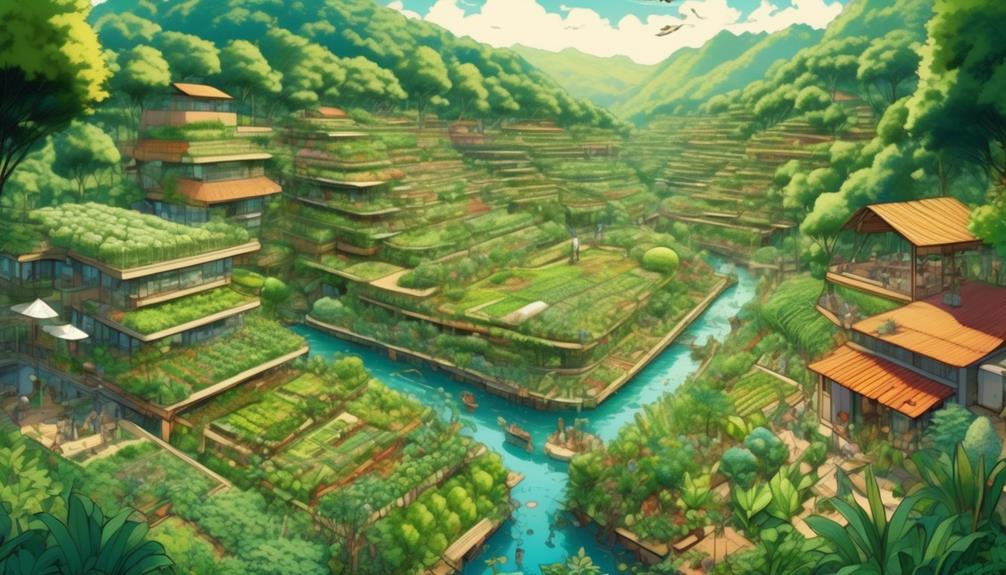
Franklin Hiram King made significant contributions to the development and understanding of permanent agriculture, which laid the foundation for the principles and practices of permaculture. His work has greatly influenced sustainable agriculture advancements and continues to shape our understanding of regenerative systems.
Here are three key contributions of Franklin Hiram King:
- Introduction of the term permanent agriculture: In 1911, King introduced the term ‘permanent agriculture’ to describe agricultural practices that aim to create sustainable and long-lasting systems.
- Focus on soil fertility and conservation: King emphasized the importance of soil fertility and conservation. His research on soil moisture and the effects of different agricultural practices on soil health laid the groundwork for sustainable soil management techniques.
- Advocacy for holistic farm planning: King promoted the idea of holistic farm planning, which considers the interconnections between different elements on the farm, such as crops, livestock, and water management. His approach aimed to create cohesive and sustainable systems that benefited both the environment and the farmer.
Franklin Hiram King’s contributions have significantly influenced the field of sustainable agriculture and have provided a basis for the principles and practices of permaculture. His emphasis on soil health, conservation, and holistic farm planning continues to guide regenerative practices today.
Joseph Russell Smith’s ‘Tree Crops’
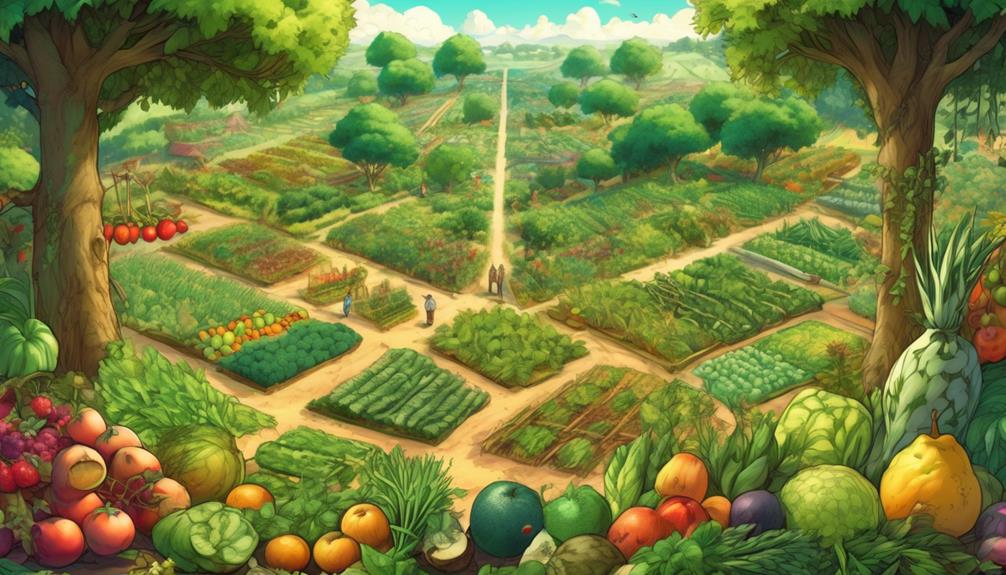
Joseph Russell Smith’s groundbreaking work on ‘Tree Crops‘ builds upon Franklin Hiram King’s contributions to permanent agriculture, offering further insights into regenerative practices that prioritize the cultivation of sustainable and resilient ecosystems.
Smith’s book, published in 1929, revolutionized agriculture by introducing the concept of integrating tree crops into agricultural systems. His work focused on the potential of perennial crops, such as nuts, fruits, and timber, to provide long-term benefits to both the environment and human communities.
Smith’s approach emphasized the importance of diversification, as tree crops contribute to soil fertility, prevent erosion, provide habitat for wildlife, and offer multiple harvests over their lifespan. This paradigm shift towards sustainable design challenged the conventional monoculture model and paved the way for a more holistic and regenerative approach to agriculture.
Smith’s ideas continue to inspire and inform the practice of permaculture, revolutionizing agriculture and promoting the cultivation of sustainable and resilient ecosystems.
George Washington Carver’s Advocacy
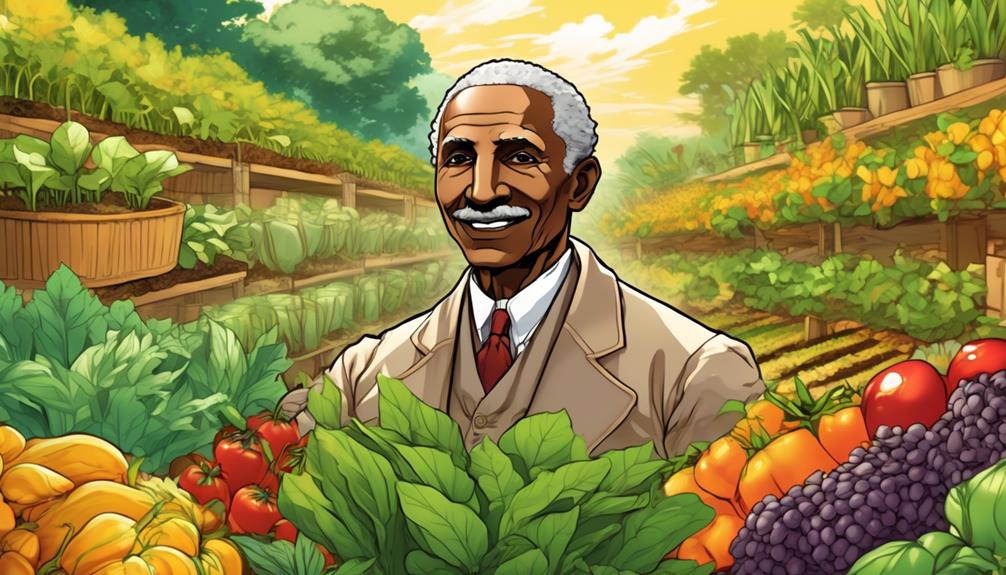
George Washington Carver, a pioneering figure in sustainable agriculture, advocated for innovative practices that prioritized the restoration of soil fertility and the cultivation of diverse crops to promote holistic and regenerative ecosystems. His work had a profound impact on the field of agriculture, influencing both farmers and scientists alike.
Here are three ways in which George Washington Carver’s advocacy revolutionized sustainable agriculture:
- Crop Rotation: Carver promoted the practice of rotating crops to prevent soil depletion and enhance soil fertility. This technique reduces the need for synthetic fertilizers and pesticides, promoting a more sustainable and regenerative approach to farming.
- Nitrogen Restoration: Carver emphasized the importance of nitrogen-fixing crops, such as peanuts and soybeans, to restore nitrogen levels in the soil. By incorporating these crops into rotation, farmers can naturally replenish nutrients and improve soil health.
- Diverse Crop Cultivation: Carver encouraged farmers to diversify their crop selection, promoting biodiversity and resilience in agricultural systems. This approach minimizes the risk of crop failure, enhances pest control, and provides a more stable and sustainable food supply.
Through his advocacy, George Washington Carver paved the way for sustainable agricultural practices that prioritize the health of the soil, the diversity of crops, and the overall regeneration of ecosystems. His work continues to inspire and guide farmers and researchers in their quest for a more sustainable and regenerative future.
P. A. Yeomans and Keyline Design
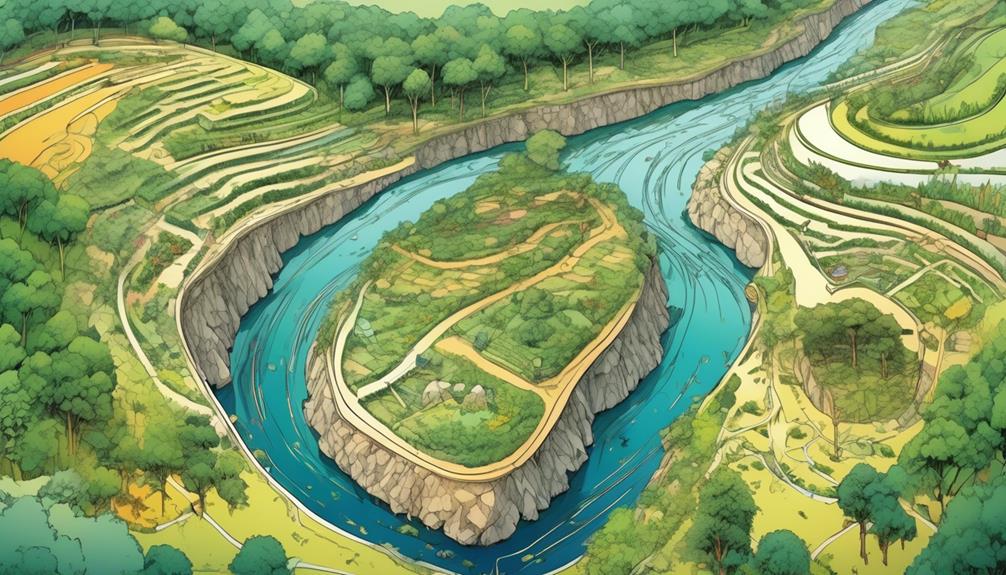
P. A. Yeomans, a visionary in land management and design, played a pivotal role in the development and promotion of Keyline Design, a holistic and regenerative approach to sustainable agriculture and land use.
Yeomans’ impact on land management was profound, as he introduced observation-based techniques that sought to harmonize with natural systems. Keyline Design, one of Yeomans’ most significant contributions, is based on the understanding that water is the key to unlocking the productive potential of land.
It involves the systematic design of water flow on a landscape, using a series of contour lines to capture and distribute water efficiently. This approach not only improves soil quality but also enhances crop yields and overall ecosystem health.
The applications of Keyline Design are diverse and include contour plowing, keyline cultivation, and keyline dams. These techniques help to conserve water, restore degraded landscapes, and promote sustainable agriculture.
By integrating water management with land use, Yeomans’ Keyline Design offers a holistic solution that fosters regenerative practices and enhances the resilience of ecosystems.
| Keyline Design Applications | Benefits |
|---|---|
| Contour plowing | Prevents soil erosion and runoff, improves soil structure |
| Keyline cultivation | Enhances water distribution, increases crop yields |
| Keyline dams | Stores water for irrigation, improves water availability |
In essence, Yeomans’ Keyline Design provides a framework that encourages a systems-thinking approach to land management. By understanding the interconnectedness of water, soil, and plants, this approach fosters a sense of belonging to the land and promotes regenerative practices that nurture both people and the Earth.
Bill Mollison and David Holmgren’s Development of Permaculture Ideas
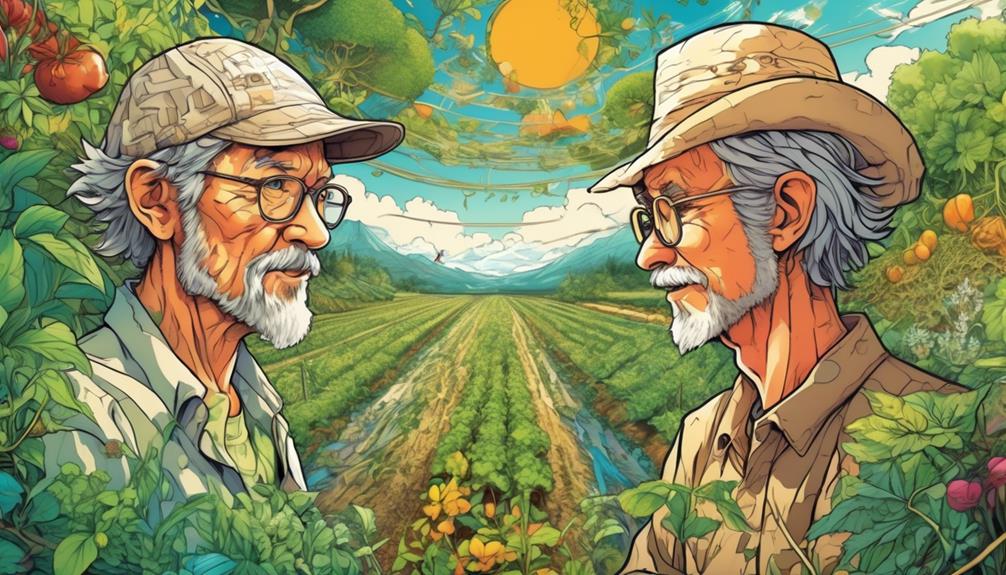
Building upon the principles of Keyline Design and the holistic approach to land management, Bill Mollison and David Holmgren further developed the concept of permaculture, revolutionizing sustainable agriculture and design. Their impact on the field has been profound, and their contributions continue to shape permaculture practices today.
Bill Mollison and David Holmgren’s development of permaculture ideas can be summarized as follows:
- Permaculture Design Principles: Mollison and Holmgren articulated a set of principles that guide permaculture design. These principles emphasize observing and interacting with nature, catching and storing energy, and obtaining a yield.
- Techniques for Sustainable Agriculture: Through their work, Mollison and Holmgren introduced innovative techniques for sustainable agriculture. These techniques include companion planting, agroforestry, and organic farming methods.
- Regenerative Design: Mollison and Holmgren’s approach to permaculture is rooted in regenerative design, which aims to restore and enhance ecosystems. They emphasized the importance of working with natural systems and patterns, rather than against them.
Bill Mollison and David Holmgren’s impact on permaculture design principles and techniques cannot be overstated. Their work has inspired countless individuals and communities to embrace sustainable practices and create regenerative systems that promote the well-being of both people and the planet.
Localized and Place-Specific Design

Localized and place-specific design is a fundamental principle of permaculture. It encompasses the holistic, regenerative, and systems-thinking approach to creating sustainable and resilient systems.
These systems are uniquely suited to their specific environments. Permaculture goes beyond traditional agricultural practices. It emphasizes the importance of observing and interacting with nature, catching and storing energy, and obtaining a yield.
This approach recognizes that each landscape and community has its own unique set of resources, challenges, and opportunities.
Permaculture and regenerative agriculture aim to regenerate ecosystems and restore degraded land. On the other hand, permaculture and sustainable urban design focus on creating thriving urban environments. These environments integrate nature and human needs.
Lack of Scientific Literature

The lack of scientific literature on permaculture poses a challenge in fully understanding and quantifying its impact and efficacy as a holistic, regenerative, and systems-thinking approach to sustainable agriculture and design.
While permaculture has gained popularity and recognition worldwide, there is a limited amount of research available that specifically focuses on its principles and practices.
This scarcity of scientific literature hinders the ability to assess permaculture’s effectiveness and address potential challenges. However, despite the lack of research, permaculture continues to thrive and evolve through practical application and the shared experiences of its practitioners.
It is important to acknowledge the need for further permaculture research to deepen our understanding, refine techniques, and overcome the challenges associated with implementing this sustainable approach to agriculture and design.
Emphasis on People Care
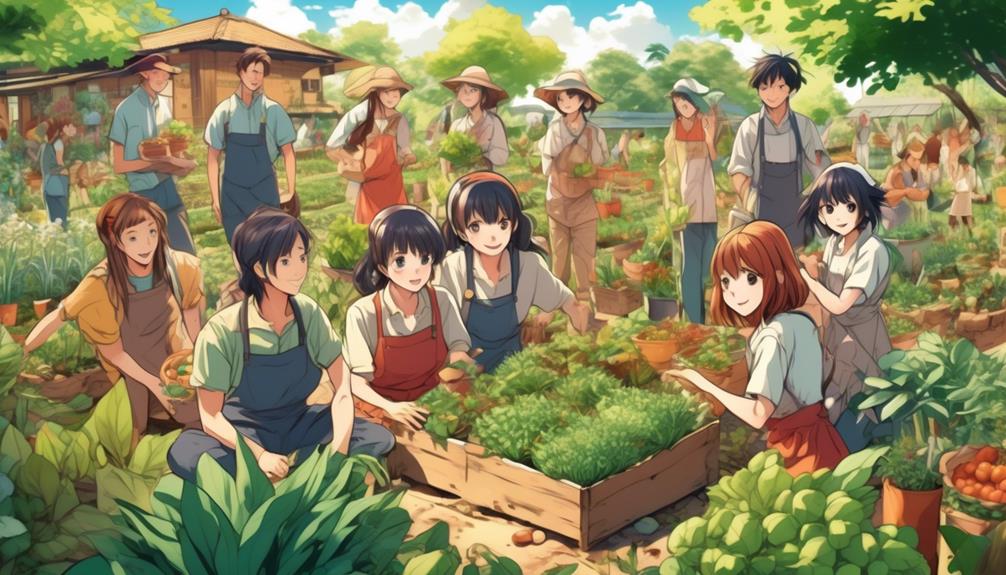
Permaculture’s emphasis on caring for people is a fundamental aspect of its holistic, regenerative, and systems-thinking approach to sustainable agriculture and design. It recognizes that the well-being of individuals and communities is interconnected with the health of the environment.
Permaculture seeks to nurture and support human beings in a way that promotes physical, emotional, and mental health. This includes creating spaces that are conducive to relaxation, stress reduction, and overall well-being.
Permaculture principles can be applied to urban environments, where the need for people care is particularly relevant. By integrating green spaces, community gardens, and urban farming, permaculture can improve the quality of life for city dwellers, providing opportunities for connection with nature, improved mental health, and a sense of belonging to a community.
Importance of Local Communities and Generational Knowledge
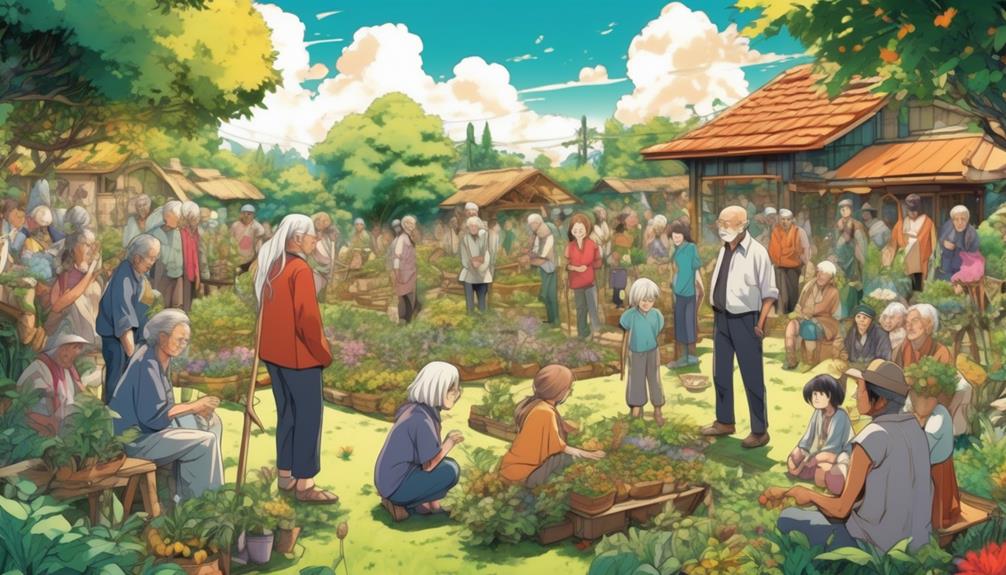
An essential aspect of permaculture’s holistic, regenerative, and systems-thinking approach is recognizing and valuing the importance of local communities and the wealth of generational knowledge they possess.
Permaculture acknowledges that sustainable agriculture and design cannot be achieved in isolation, but rather through active engagement with the local community.
Here are three ways in which local community engagement and intergenerational learning contribute to the success of permaculture:
- Shared Wisdom: Local communities have a deep understanding of the land, climate, and ecosystem in their region. Their traditional knowledge and practices, passed down through generations, provide valuable insights into sustainable agriculture and design.
- Cultural Preservation: Engaging with local communities ensures the preservation of cultural heritage and traditions. By incorporating indigenous wisdom and practices, permaculture can foster a sense of belonging and respect for diverse cultural perspectives.
- Collective Action: Permaculture encourages collaboration and cooperation within the community. Through intergenerational learning, community members can work together to implement sustainable practices, share resources, and create resilient systems that benefit everyone.
Relying on Ourselves Rather Than Power Structures or Governments
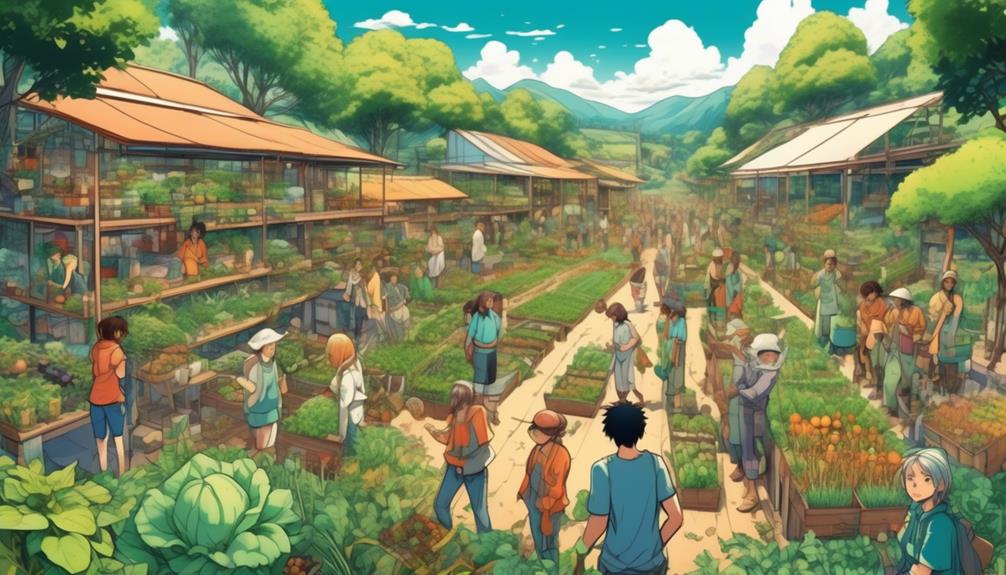
Recognizing the inherent power within local communities and the potential for collective action, permaculture encourages individuals to rely on themselves and their community networks rather than external power structures or governments.
Permaculture promotes self-sufficiency and empowers local communities to take charge of their own needs and resources.
By fostering a sense of belonging and interconnectedness, permaculture enables individuals to build resilient and sustainable systems that meet their needs while minimizing reliance on external entities.
Through practices such as regenerative agriculture, renewable energy, and community-based decision-making, permaculture empowers individuals to create thriving, self-sustaining communities.
Conclusion
Permaculture has emerged as a powerful solution to the challenges faced by modern agriculture and design. By integrating ecological principles, ethics, and design strategies, permaculture offers a holistic approach to creating regenerative and resilient systems.
With its emphasis on community, generational knowledge, and self-reliance, permaculture presents a compelling vision for a more sustainable future. One interesting idea is that permaculture design principles can minimize waste, labor, and energy input while maximizing benefits through synergy, making it a truly efficient and effective approach.
